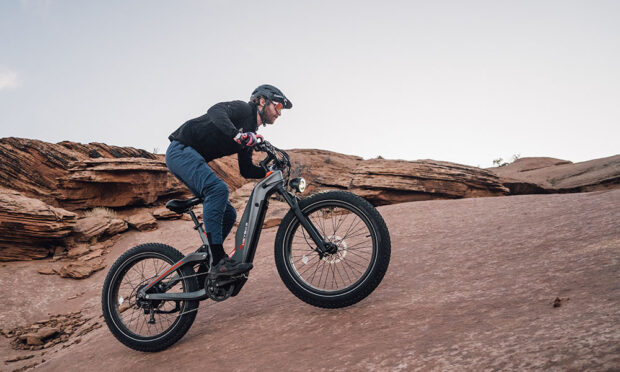Key Factors That Define E-Bike Performance and Efficiency
Understanding what makes an e-bike perform efficiently is essential for anyone looking to optimize their riding experience or choose the right model. E-bikes are gaining popularity due to their versatility, environmental benefits, and convenience, but their performance depends on a combination of factors such as motor design, battery capacity, and frame construction.
Knowing how these elements work together can help you find the ideal balance between power, range, and comfort—whether you’re an experienced rider or a newcomer to e-bikes. This article will break down the key factors that influence e-bike performance and efficiency, providing you with the knowledge to make informed decisions.
Determine How Fast the Bike Accelerates
Understanding torque vs speed is crucial when assessing e-bike performance. Torque, measured in Newton-meters (Nm), represents the rotational force produced by the motor. It determines how quickly the bike accelerates and how well it can handle inclines or heavy loads. Conversely, speed defines the maximum velocity the bike can achieve once it’s in motion.
E-bikes optimized for city commuting may focus on balanced torque and moderate speeds to navigate urban environments efficiently. Meanwhile, mountain e-bikes prioritize higher torque for tackling steep trails and rough terrain. Choosing the right balance between torque and speed depends on how you intend to use your e-bike, whether for leisurely rides, daily commuting, or off-road adventures.
The Role of Motor Design and Powertrain
The motor is at the heart of an e-bike’s performance. Different motor types, such as hub motors and mid-drive motors, offer distinct benefits. Hub motors, often found on entry-level e-bikes, are reliable and low-maintenance, making them suitable for flat terrains and casual riders. Mid-drive motors, however, provide more torque and are ideal for hill climbing and technical trails, making them a favorite for enthusiasts seeking performance.
Powertrain components, such as the drivetrain and gearing system, also influence how efficiently power is delivered to the wheels. Advanced systems with multiple gears allow riders to adjust settings based on terrain and effort level, optimizing performance and battery life. Understanding these components will help you choose an e-bike tailored to your riding preferences.
Aerodynamics and Its Impact on Efficiency
Aerodynamics significantly affects an e-bike’s efficiency, especially for riders who prioritize speed and long-distance travel. The bike frame’s shape, battery placement, and overall design contribute to how easily the bike cuts through air resistance.
Streamlined designs, such as those with integrated batteries and hidden cabling, not only improve aerodynamics but also enhance the bike’s aesthetics. Features like wind-cutting frame geometries and narrow handlebars further reduce drag, allowing riders to travel farther on a single charge. If efficiency is a priority, look for e-bikes with designs optimized for reduced wind resistance.
Tires and Rolling Resistance
Tires are a critical factor in determining an e-bike’s handling, comfort, and efficiency. Wider tires offer better grip and shock absorption, making them ideal for off-road or uneven terrain. However, they increase rolling resistance, which can reduce battery efficiency and range. Narrower tires, on the other hand, are better suited for paved roads and urban commutes, as they offer lower rolling resistance and greater efficiency.
Rolling resistance refers to the effort needed to keep a tire moving. Opting for tires with a smooth tread pattern and maintaining proper inflation levels can minimize rolling resistance, ensuring a smoother and more energy-efficient ride. Choosing the right tire type depends on where and how often you plan to ride your e-bike.
Weight Distribution and Its Effect on Handling
The placement of the motor and battery in an e-bike significantly affects its weight distribution and handling. A well-balanced e-bike offers better stability and control, particularly when navigating corners or uneven surfaces. Mid-drive motors tend to provide the most balanced weight distribution since they are located near the bike’s center.
Lightweight materials, such as aluminum or carbon fiber, reduce the overall weight of the bike without compromising durability. This reduction improves handling and makes the bike easier to maneuver, especially for riders who frequently carry it up stairs or transport it in vehicles.
The Importance of Battery Capacity and Management
Battery capacity directly affects an e-bike’s range and performance. Larger batteries offer more extended riding distances, but they also add weight. Understanding watt-hours (Wh), the measure of battery capacity, helps you choose an e-bike with the right balance between range and portability.
Efficient battery management systems (BMS) optimize energy use and extend the battery’s lifespan. Features such as regenerative braking, which recaptures energy while slowing down, can further improve efficiency. Paying attention to battery placement, such as integrated designs, also enhances the bike’s overall balance and aesthetics.
The Impact of Suspension Systems on Comfort and Performance
Suspension systems are crucial for comfort and control for riders tackling uneven terrain. E-bikes with front or full suspension absorb shocks, making rides smoother and reducing strain on the rider. Full-suspension e-bikes are especially useful for mountain biking or trails with frequent bumps and obstacles.
On the other hand, rigid frames without suspension are more efficient for road use, as they transfer power more directly to the wheels. Choosing between suspension types depends on your primary riding environment and whether comfort or efficiency is your top priority.
In conclusion, understanding the factors defining e-bike performance and efficiency allows you to select a model that meets your needs. Key considerations such as motor type, battery capacity, tire selection, and weight distribution all shape your riding experience. Aerodynamics, rolling resistance, and suspension systems further enhance how an e-bike performs in various environments.
By evaluating these elements carefully, you can find an e-bike that aligns with your lifestyle, whether you’re commuting to work, exploring off-road trails, or enjoying leisurely rides. A well-chosen e-bike maximizes performance and ensures an enjoyable and efficient journey.

